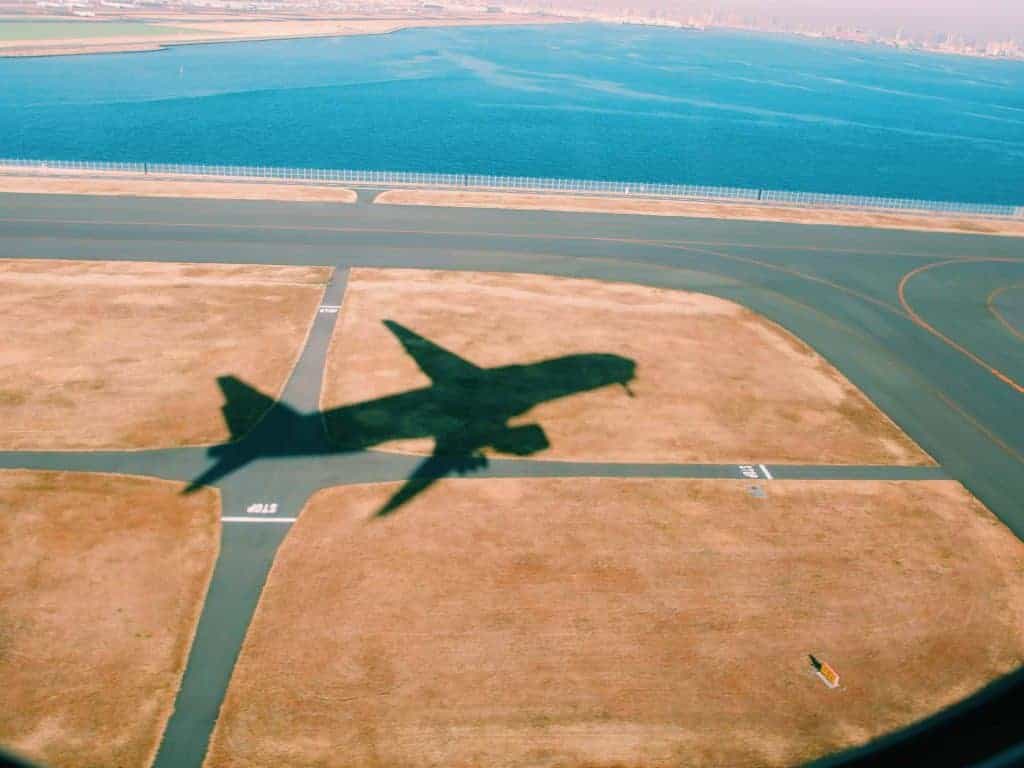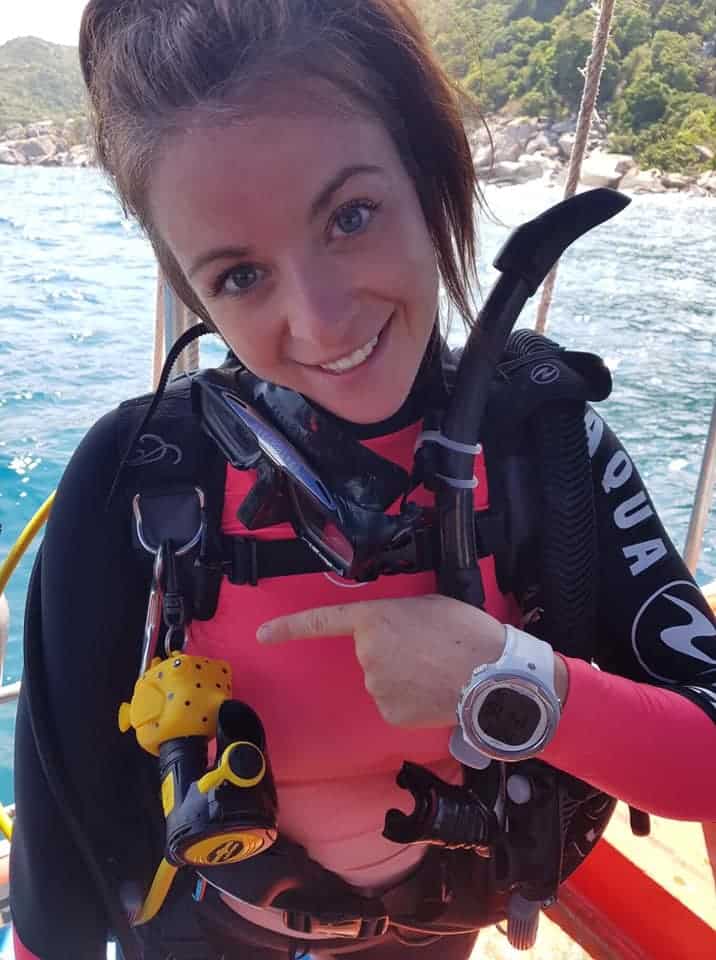If you’re just starting to learn how to scuba dive, then you may already know that there’s plenty to read up on before you take to the water. For example, there are a few things you can and can’t do after your last dive. Don’t worry – it’s all information that diving instructors will share with you throughout all your training!
Some of the most essential safety requirements are to, stay within your limits, ensure you stay hydrated before and after a dive, to always listen to your instructor, and do not mix diving and flying!
As odd as it may seem, many divers would suffer from the effect of flying even hours after a dive, whether they have been on single dives or longer dives in particular.
So, what are the risks of flying after diving, and how long should you wait from leaving your dive sites to flying after a dive?
This blog is for informational purposes only. We are not doctors! If in any doubt, you should seek advice from your dive agency, Divers Alert Network or your GP.
Table of Contents
What is a Safe Amount of Time to Wait Before Flying After Scuba Diving?
To air on the side of caution, a diver needs to wait for 24-hours before flying. The Divers Alert Network (DAN) suggests that you wait for 12 hours after scuba diving before boarding a flight, whereas US Air Force suggest 24 hours, this gives you a sufficient minimum preflight surface interval.
Here are the professional flying after air dives guidelines:
- DAN: Divers Alert Network recommend giving yourself at least 12 hours between you last dive and your flight.
- PADI: PADI is the most-recognised dive agency across the world and their experts suggest a 12-hour period between your single dive and your flight, if you go for multiple dives then you should have an 18-hour period.
- SSI: SSI are another prestigious diving agency and they recommend a diver waits at least 24-hours before flying after diving.
- US Air Force: The US Air Force also state in their guidelines that scuba divers should give themselves 24-hours before flying after diving to ensure you dive safely.
The time to wait until flying comes down to the dive profile, depth and cabin altitudes reached and modern dive computers will determine a personal guideline for you after you’ve been diving, read on for more on how to stay safe with the aid of your computer.
Either way, it is best not to go scuba diving on day trips, as you are not likely to have the time to readjust before boarding a flight and have precautions in-hand for any potential health risks.
Ideally, a diver should wait for twenty-four hours before flying, just to ensure that they are as safe as possible before having to face the cabin pressure. This is the time that I will always recommend to my students, no matter what the dive agency recommends as a minimum no-fly time.
What Are The Risks of Flying After Scuba Diving?

As fun as scuba diving can be, it is also a high-risk activity, especially if you do not know what you are doing. That is why it is essential that you go on your first course with certified divers and instructors from a professional association and avoid flying after scuba diving! Here are some of the risks that come with flying after diving:
The risk of decompression sickness (DCS)
One of the biggest causes for concern for scuba divers is feeling decompression sickness (DCS) symptoms. Remember this from your Open Water Course? It can even be fatal in severe circumstances and should therefore not be taken lightly. Simply put, as you breathe in compressed air at depth, your body naturally takes in a lot more nitrogen than it is used to. If you don’t give your body enough time to off gas this nitrogen that it absorbed at depth, then it comes out of solution and form tiny bubbles within the tissues in the body as well as the blood system.
Therefore, the human body needs enough time to release the excess nitrogen and allow its body to return to its normal state, more so after multiple dives. Without that time, the nitrogen simply saturates within your tissues and can cause a lot of pain and even result in death. In order to avoid the effects of DCS, you should slowly regain the surface of the water, ensuring that you follow the diving guidelines safely. As a diver, we should make sure you drink plenty of water before and after diving and do not over indulge in alcohol the night before and after your dive.
Your dive computer will use its algorithm and will take into account your no decompression limits to calculate the “no fly time”, based on the absorbed nitrogen levels accumulated during your dives. These are almost always very easy to spot. My Suunto D5 dive computer shows the no fly icon, a little plane, on all views with a countdown timer underneath. Other dive computers tend to be really good at making this clear too.
Remember that repetitive dives will mean that there is more of a build up of residual nitrogen. Your computer will take this into account. If divers have completed a single no decompression dive, their residual nitrogen levels will be less, but even then, flying after diving could form bubbles of nitrogen which enter their bloodstream and tissues.
And this is one of the reasons why having and using your own computer is so, so important! Use the same computer on every dive – do not share dive computers!
Those that aren’t a single no stop dive, but dives requiring decompression stops, are not to be taken lightly. That decompression stop in the shallower water will help your body to off gas excess nitrogen so it’s safe to surface. Moreover, since the atmospheric pressure inside aeroplanes is lower, especially in a long haul flight which will go much higher, the nitrogen will enter your body tissues and even joints far easier. You, therefore, have more risk of feeling the effects of DCS if your flying after diving.
Decompression sickness is a brutal illness. By staying within your limits and keeping to safe diving practices, you can minimise the risk significantly.
Unexpected encounters during the dive trip
Not as worrying as the previous reason, but this is something to bear in mind when diving.
Generally speaking, scuba divers can explore and enjoy witnessing the natural habitats of some of the most fascinating creatures on the planet safely, with many divers having never had a bad experience with wild animals even over the course of multiple dives.
However, new divers and even experienced ones can make mistakes or find themselves surprised by the arrival of an animal that they didn’t see.
Although it is unlikely that you will be harmed by an animal on a dive, you can indeed be stung by a sea urchin or jellyfish, anemones, fire coral, just to name a few. If you are badly affected by the reaction of an animal, then you may need medical care and will have no option to wait a little longer before you fly home.
Although not linked to the physiological effects of diving on scuba equipment, if you do get injured by marine life on a dive, then you have that extra time to spare between diving and flying. Plus, your diving gear’s got to have enough time to dry before you pack it up into your bag and fly home. Taking a longer surface interval when diving flying is helpful in more ways than one!
Can You Dive Within 24 Hours of Flying?
Diving after flying is a completely different subject and here’s why…

You can dive after flying, this is completely different to flying after diving. It is actually perfectly fine to dive from the moment you land in your destination. The preflight surface interval is not relevant, basically there is no need for a post-flight surface interval.
Lots of new divers confuse diving after flying with flying after diving, yes I know, this sounds confusing but it isn’t.
Here’s what you need to know:
- Dive After Flying – When you land at your dive destination, you’re free to dive immediately after.
- Flying After Diving – Once you have enjoyed a scuba diving adventure, it is important that you give yourself 24 hours before you board a plane.
Low Altitude Flying After Diving
Most divers may think that flying after diving depends on the actual altitude of the flight and how far above sea level the plane flies. Regardless of the altitude, divers should be giving themselves 24-hours before flying.
Although there are statistics and studies to show that diving then flying no higher than 1,000 feet could be safe. With that said, I don’t see any point in getting into technicalities unless it’s an emergency. The 24-hour period has been recommended for a reason and many dive insurance policies will not cover you for flying regardless of whether or not it’s a high altitude or not.
You’re at risk of suffering altitude decompression sickness when you fly in an unpressurized aircraft even if you are flying at lower altitudes, this is the same risk and should be taken seriously.
Can I Go to High Altitudes After Diving?
You cannot fly after diving due to the high altitude and the increased risk of DCS symptoms. This also comes into consideration for activities such as mountain climbing, zip wire, bungee jumping or anything at altitude. All these sports should be avoided for 24 hours after a scuba dive.
Here are other things that you should not do for a period after diving:
- Mountain climbing
- Zip wire
- Bungee jumping
- Climbing at heights
- Traveling to locations above sea level by 1,000 feet
- Altitude diving
Conclusion
Ultimately, the general consensus from experts is to wait 12-24 hours after your final dive before flying. That’s regardless of what time your first dive was carried out, I recommend playing it safe and giving yourself 24 hours between your scuba session and flight. This will give your body 24 hours to off gas the absorbed nitrogen within your bloodstream.
Even the most experienced diver can make the mistake of accidentally ignoring the safety guidelines. You may naturally want to spend multiple days scuba diving and enjoying the benefits of being in the ocean in a hot country before your flight – who can blame you?!
However, it is definitely better to save your last dives (and obviously your final scuba dive) to at least one day before the last day of your trip. Flying after diving could lead to decompression sickness, endanger yourself and ruin what could be the best trip of your life! Allow yourself the time that you need to regain your normal levels before reaching a high altitude in an aeroplane. Why not make the most of this surface interval and book yourself onto a land based day trip or two before you fly out?!
For more information on diving and staying safe, make sure you visit the Divers Alert Network (DAN).

